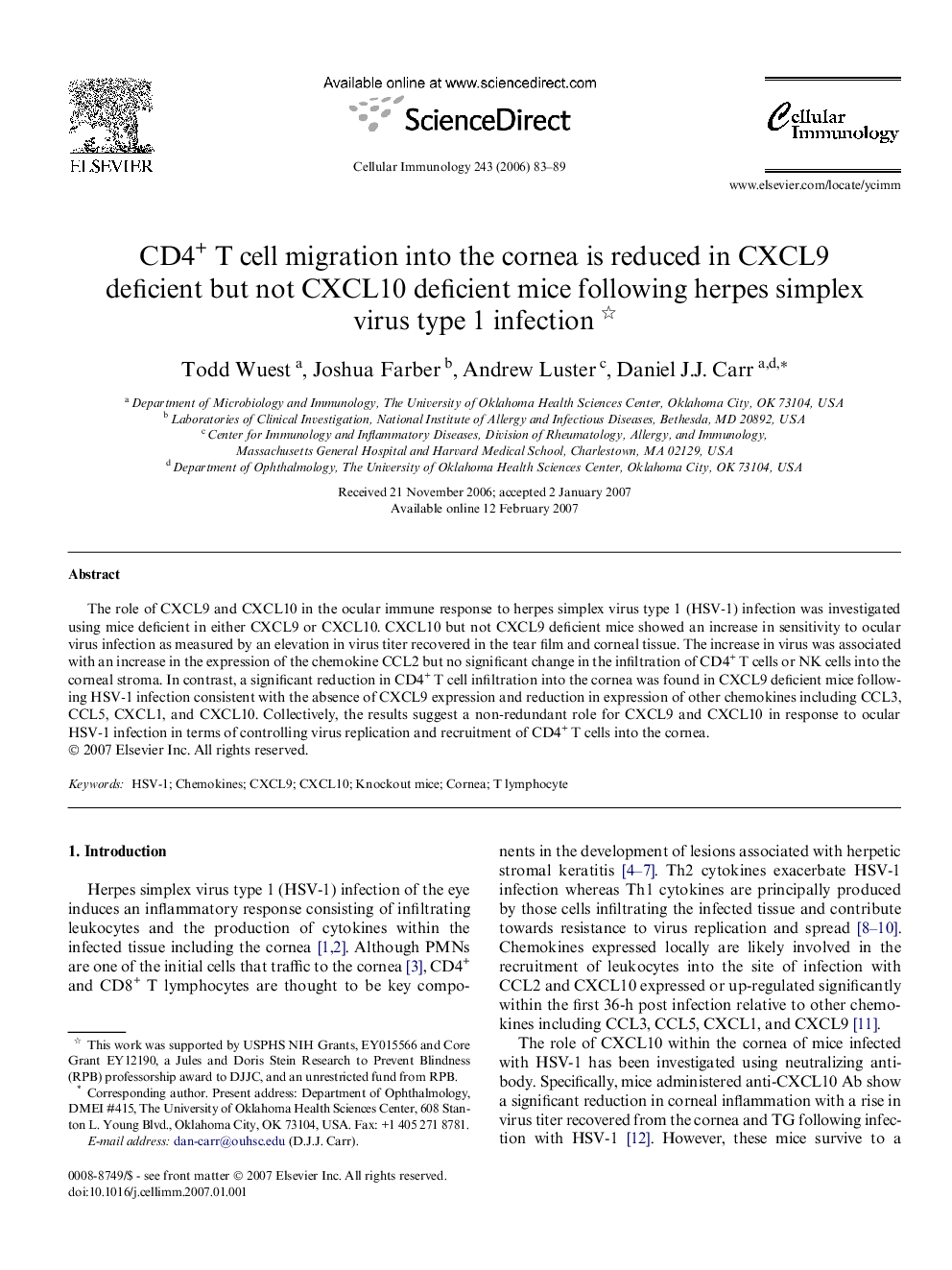| کد مقاله | کد نشریه | سال انتشار | مقاله انگلیسی | نسخه تمام متن |
|---|---|---|---|---|
| 2168091 | 1092374 | 2006 | 7 صفحه PDF | دانلود رایگان |

The role of CXCL9 and CXCL10 in the ocular immune response to herpes simplex virus type 1 (HSV-1) infection was investigated using mice deficient in either CXCL9 or CXCL10. CXCL10 but not CXCL9 deficient mice showed an increase in sensitivity to ocular virus infection as measured by an elevation in virus titer recovered in the tear film and corneal tissue. The increase in virus was associated with an increase in the expression of the chemokine CCL2 but no significant change in the infiltration of CD4+ T cells or NK cells into the corneal stroma. In contrast, a significant reduction in CD4+ T cell infiltration into the cornea was found in CXCL9 deficient mice following HSV-1 infection consistent with the absence of CXCL9 expression and reduction in expression of other chemokines including CCL3, CCL5, CXCL1, and CXCL10. Collectively, the results suggest a non-redundant role for CXCL9 and CXCL10 in response to ocular HSV-1 infection in terms of controlling virus replication and recruitment of CD4+ T cells into the cornea.
Journal: Cellular Immunology - Volume 243, Issue 2, October 2006, Pages 83–89